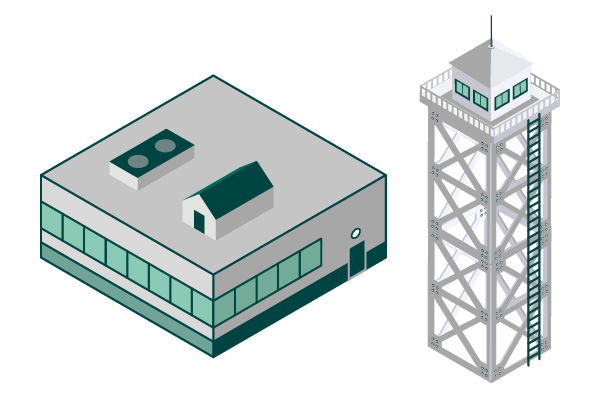In the same way an organization takes care of its employees, customers, and finances, it also needs to ensure its sensitive data is well protected. Data security is mandated by regulations such as HIPAA, SOX, and GDPR and to ensure compliance, organizations have a duty to safeguard data privacy by preventing unauthorized access.
In theory, the principle behind data security sounds relatively simple. In practice, data security presents a major challenge for organizations, especially when you consider the large volumes and different types of data generated, stored, sent, and received on a daily basis, and the complexity of today’s hybrid IT environments.
Data security is the practice of identifying and protecting sensitive data, and ensuring it remains secure throughout its lifecycle. The data that requires protection is dependent on the compliance regulation or standard that governs the organization – this could be by:
- Industry, such as the Protected Healthcare Information (PHI) privacy rule, or by
- Data type, such as Payment Card Information (PCI) or Personally Identifiable Information (PII)
Data security solutions facilitate the proper handling of this data, helping organizations achieve and maintain compliance through the management and control of data at rest, in use, and in motion.
Anchor ID:
#what-is-data-security-19728
Data security is both a mindset and a coordinated, concrete set of efforts and software solutions deployed throughout an organization designed to comprehensively protect data transmitted each day at all stages of its journey.
For comprehensive data security, organizations need to add a layer of protection so that each stage of data is protected throughout its journey for end-to-end security.
Ideally, your data security position should include solutions that can understand and classify your data, detect and prevent leaks, and secure and protect data both at rest and in motion via system-to-system transfers and web transfers.
Read more: What is Data Security?
Data Security Methods
People, process, and technology all play a key role when it comes to how data security is applied. To reduce risk and meet data protection and privacy regulations, safeguarding methods need to include a combination of access, security, and organizational controls. Access to sensitive data needs to be restricted both physically and online. Systems, networks, and applications need the appropriate administrative and security controls, and employees need policies that allow them to understand and implement industry best practices.
Anchor ID:
#how-we-help-by-industry-20245

Defense
Anchor ID:
#defense-20239
Share large files only with suppliers who are cleared for International Traffic in Arms (ITAR) data and prevent unauthorized data sharing.

Healthcare
Anchor ID:
#healthcare-20240
Encrypt and securely transfer patient data with third parties, without fear of breach.

Law Enforcement
Anchor ID:
#law-enforcement-20241
Allow community members to submit evidence for law enforcement, including video footage and other documentation of any size, without risk of malware.

Finance
Anchor ID:
#finance-20242
Allow business partners and customers to collaborate securely and remotely, by identifying, classifying, and encrypting data, as well as setting access control on it.

Government
Anchor ID:
#government-20243
Share classified data on a secure network with another nation, while eliminating risks and unauthorized exposure.
Anchor ID:
#what-is-data-privacy-20231
Data privacy, at its most basic, is defined as the appropriate use of data. When data is entrusted to an organization it is to be used only according to the purposes agreed upon.
Data privacy and protection laws are becoming increasingly more commonplace across the US, with different states introducing new regulations. Ensuring data privacy is prioritized at your organization can help prevent misuse that can result in substantial financial and reputational costs.
Incorporating data protection solutions enterprise-wide can provide the layered security needed to ensure data privacy and protection policies enacted can be carried out.
Data Security and Data Privacy
While data privacy centers around how data is used, data security encompasses all of the processes, practices, policies, and technology that is put in place to ensure that sensitive data is not being inappropriately accessed or used by individuals not authorized to this data.
Simply put, proper data protection measures help ensure data privacy. A comprehensive data security policy covers both data privacy as well as data security through education and training as well as technology that can shoulder some of the burden of ensuring data collected and exchanged is kept both private and secure
Why is Data Privacy Important?
The privacy expectations of the data individuals turn over to organizations that they conduct business with are high. As are the stakes. Not following data privacy and protection regulations can result in hefty penalties from the Federal Trade Commission, and more importantly, a loss of reputation that is hard to put a price on.
Relying solely on employees for data privacy puts protected data at risk of human error and inefficiency. Automated, secure data security software can instead be utilized to identify, classify, encrypt, and protect data end-to-end as it flows in and out of your organization’s network.
Anchor ID:
#how-do-data-security-solutions-work-19729

Data security is a must for any organization, but how do data security solutions work? Data security solutions help organizations know what data they have, where it lives, how it is shared, and who has access to it. In a nutshell, data security solutions work by providing visibility and security at the same time.
Data security solutions not only focus on preventing malicious or accidental access to data they also focus on protecting the data (and even the hidden metadata) that can contain sensitive information.
Modern solutions can utilize cloud-based applications and operate within a hybrid IT environment. Robust solutions can secure data no matter where it resides or how it gets from point A to point B, minimizing internal and external threats.
The Ultimate Guide to Data Protection
Protecting data is paramount to business success. Download this guide to learn what data protection is, why it's so critical, and how businesses can better protect the data they store and process.
Anchor ID:
#data-security-solutions-from-fortra-18551
Fortra provides tools to help improve your organization’s data security and compliance posture. Our data security solutions allow you to understand your sensitive data and keep it secure throughout its lifecycle, no matter where it resides (on premise or in the cloud), or how it’s shared. Download the datasheet >
Data Classification
Globalscape by Fortra provides tools to help improve your organization’s data security and compliance posture. Our data security solutions allow you to understand your sensitive data and keep it secure throughout its lifecycle, no matter where it resides (on premise or in the cloud), or how it’s shared. Download the datasheet >
Enterprise Data Loss Prevention (DLP)
Get enterprise data protection without the complexity. Our data protection platform gives security leaders visibility and control over their sensitive data. Endpoint DLP, classification, network DLP, and discovery capabilities work together to eliminate gaps in your data protection program.
Secure Managed File Transfer (MFT)
An automated MFT solution provides a secure and compliant way to share data within and outside your organization, all through a centralized platform. With the addition of Adaptive DLP, you can ensure that files sent and received do not contain any sensitive data or unwanted cyber threats. Compare MFT solutions.
Data Encryption
Encrypting data at rest and in motion is a key requirement for many regulations and is your last line of defense to ensure your sensitive data does not fall into the wrong hands. Our solutions can limit the impact of a data breach as the data cannot be decrypted without the appropriate key.
Digital Rights Management
Encrypt and control access to your crown jewels, wherever the files travel. Our digital rights management solution allows you to secure, track, audit, and revoke access to sensitive data such as intellectual property and PII – so that what makes your company unique stays protected.
Email Security
With the ease and convenience of email for conducting business each day, inbound spear phishing, cyberattacks, malicious email threats, and more abound. Fortra offers email security solutions that can stop compromising tactics and account takeover attacks in their tracks. Our automated DMARC email authentication solution can also add protection to customers and trading partners, particularly from email spoofs masquerading and potentially ruining your organization’s reputation.
Digital Risk Protection
Safeguard critical digital assets from external cyberthreats. We offer expert-curated threat intelligence and complete mitigation against brand impersonation, data leakage, social media threats, account takeover, and other digital risks in one complete solution.
Anchor ID:
#featured-bundles-20237

MFT Threat Protection
Ensure every file is inspected and sanitized before continuing to its destination. Our MFT Threat Protection bundle combines the power of Fortra MFT solutions with our Secure ICAP Gateway for seamless, secure file transfers.
- Check out the datasheet
- Read a case study
- Demo the GoAnywhere MFT bundle or demo the Globalscape EFT bundle
MFT Rights Management
Go beyond managed file transfer for more protection and control of sensitive files. With the MFT Rights Management bundle, you can secure and encrypt files wherever they go, and revoke file access at any point - even after files leave your MFT platform.
- Check out the datasheet
- Watch this video of key use cases
- Demo the GoAnywhere MFT bundle
Anchor ID:
#award-winning-data-centric-security-20238

In recognition for our enterprise data security and protection, Cybersecurity Excellence named Fortra the 2023 winner for Anti Phishing, Data Classification, Data Leakage Protection, Data Security Platform, Data-Centric Security, Digital Rights Management, Email Security, Phishing Detection and Response, and Threat Detection, Intelligence, and Response. Learn more.
Cyber Defense Magazine also recognized Fortra as a winner in the Data Security category at the 2022 Global Infosec Awards, announced at RSA Conference 2022.